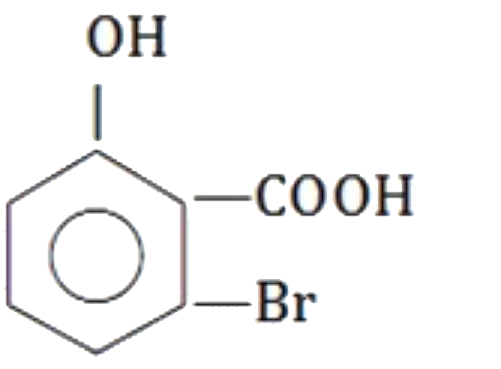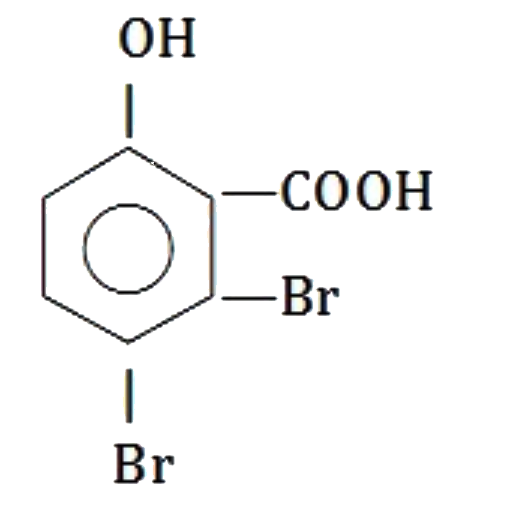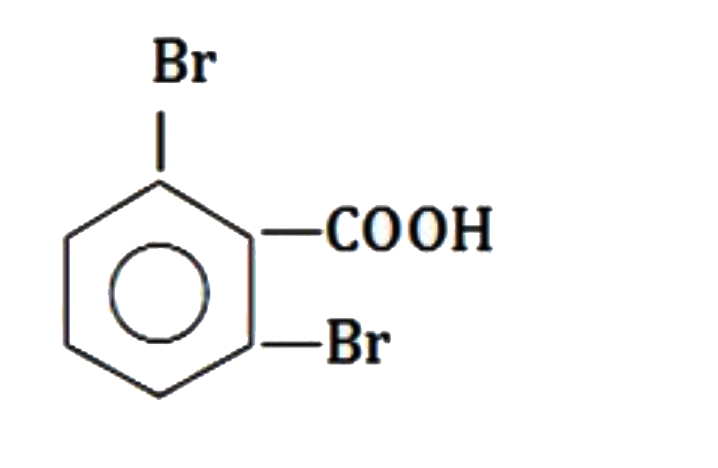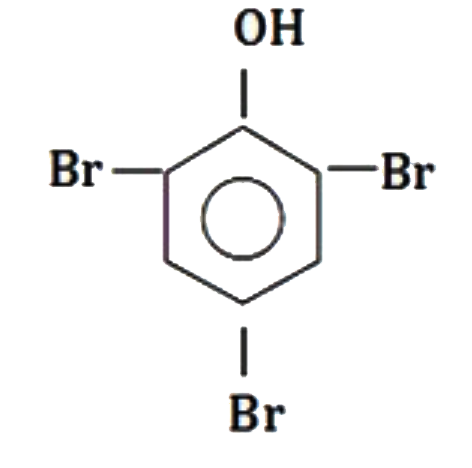The reaction of p−HOC6H4COOH with excess Br2 forms




The correct Answer is:D
To solve the problem regarding the reaction of para-hydroxybenzoic acid (p−HOC6H4COOH) with excess Br2, we will follow these steps:
Step 1: Identify the Structure of the Reactant
The reactant is para-hydroxybenzoic acid, which can be represented as follows:
- It has a hydroxyl group (-OH) and a carboxylic acid group (-COOH) attached to a benzene ring at the para position.
Step 2: Understand the Reaction with Bromine
When para-hydroxybenzoic acid reacts with excess bromine (Br2), the bromine will undergo electrophilic aromatic substitution. The hydroxyl group (-OH) is an activating group and directs the bromination to the ortho and para positions relative to itself.
Step 3: Draw the Reaction Mechanism
1. The bromine molecule (Br2) will dissociate to form bromine radicals or bromonium ions.
2. The bromine will then attack the ortho and para positions of the benzene ring, leading to the substitution of hydrogen atoms with bromine atoms.
Step 4: Identify the Final Product
In the case of excess bromine, both ortho and para positions will be brominated. Therefore, the final product will have:
- Two bromine atoms attached to the benzene ring: one at the ortho position and one at the para position relative to the hydroxyl group.
Step 5: Write the Final Structure
The final product can be represented as:
- A benzene ring with one hydroxyl group (-OH), one carboxylic acid group (-COOH), one bromine at the ortho position, and one bromine at the para position.
Final Product Structure:
The final product is 2,4-dibromo-5-hydroxybenzoic acid.
Conclusion
Thus, the reaction of para-hydroxybenzoic acid with excess Br2 forms 2,4-dibromo-5-hydroxybenzoic acid.
---
The reactant is para-hydroxybenzoic acid, which can be represented as follows:
- It has a hydroxyl group (-OH) and a carboxylic acid group (-COOH) attached to a benzene ring at the para position.
When para-hydroxybenzoic acid reacts with excess bromine (Br2), the bromine will undergo electrophilic aromatic substitution. The hydroxyl group (-OH) is an activating group and directs the bromination to the ortho and para positions relative to itself.
1. The bromine molecule (Br2) will dissociate to form bromine radicals or bromonium ions.
2. The bromine will then attack the ortho and para positions of the benzene ring, leading to the substitution of hydrogen atoms with bromine atoms.
In the case of excess bromine, both ortho and para positions will be brominated. Therefore, the final product will have:
- Two bromine atoms attached to the benzene ring: one at the ortho position and one at the para position relative to the hydroxyl group.
The final product can be represented as:
- A benzene ring with one hydroxyl group (-OH), one carboxylic acid group (-COOH), one bromine at the ortho position, and one bromine at the para position.
The final product is 2,4-dibromo-5-hydroxybenzoic acid.
Thus, the reaction of para-hydroxybenzoic acid with excess Br2 forms 2,4-dibromo-5-hydroxybenzoic acid.
Topper's Solved these Questions
Similar Questions
Knowledge Check
The reaction RCH2CH2COOHRedP−−→Br2RCH2−C∣BrHCOOH is called as
ACannizzaro reactionBHell Volhared Zelinsky reactionCReimer Teimann reactionDSandmeyer reactionThe reaction RCH2CH2COOHRed P−−→Br2R−CH2−CH∣Br−COOH is called
AReimer-Tiemann reactionBHell-Volhard Zelinsky reactionCCannizzaro reactionDSandmeyer reactionIn the following reaction order , B is
CH3CH2COOHP/Br2−−−→AalcKOH−−−−→H+BACH2=CH−COOHBCH2−CH∣Br−COOHCCH3CH2COBrDCH3CH2CH2OH
What are A and B in the following sequence of reactions :
CH3CH2COOHP−−→Br2A,(ii)A(i)Alc.KOHexcess−−−−−−−−−−−→(ii)H+B
View SolutionFind out product D in the following sequence of reaction .CH3−CH2−COOH+Na→ABrr/Red.P.−−−−−−−→BNANO2−−−−→CH2O−−→D
View SolutionAnunknown compound 'A' has a molecular formula of C4H6 when 'A' is treated with an excess of Br2 a new substance 'B' with formula C4H6Br2 is formed. A forms a white precipitate with ammonical silver nitrate solution 'A' may be
View SolutionThe intermediate(s) formed during the reaction
C6H5CH2COOAg+Br2CCl4−−→C6H5CH2Br is (are) :
View SolutionThe intemediates formed during the reaction:
C6H5CH2COOAg+Br2CCl4−−→ΔC6H5CH2Br
View Solution
